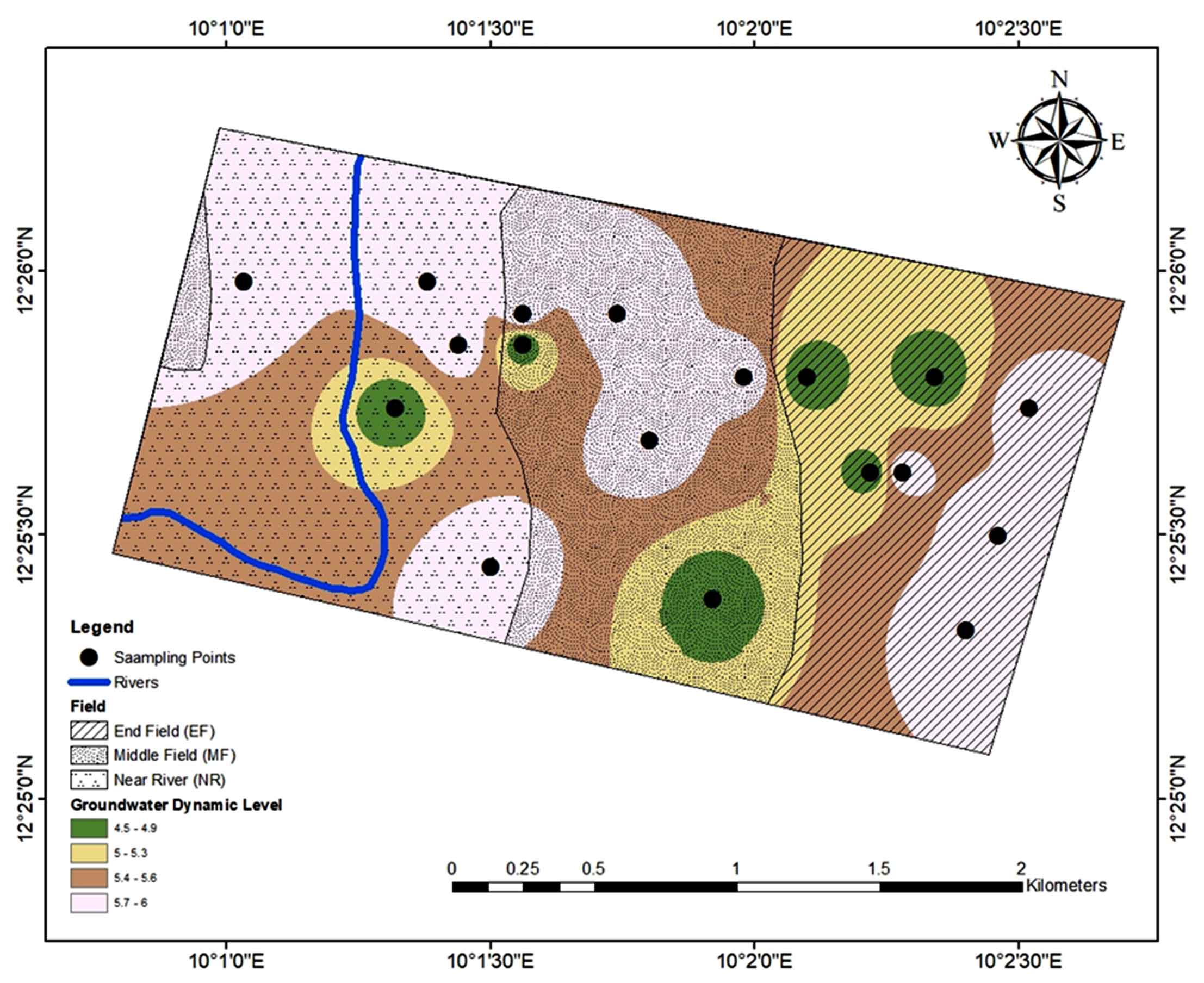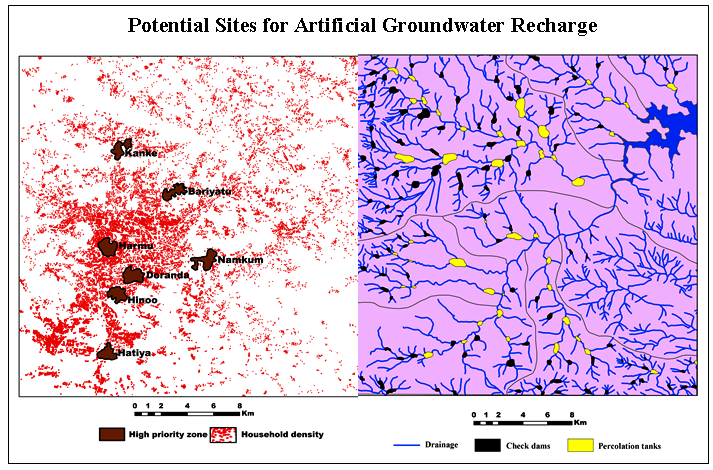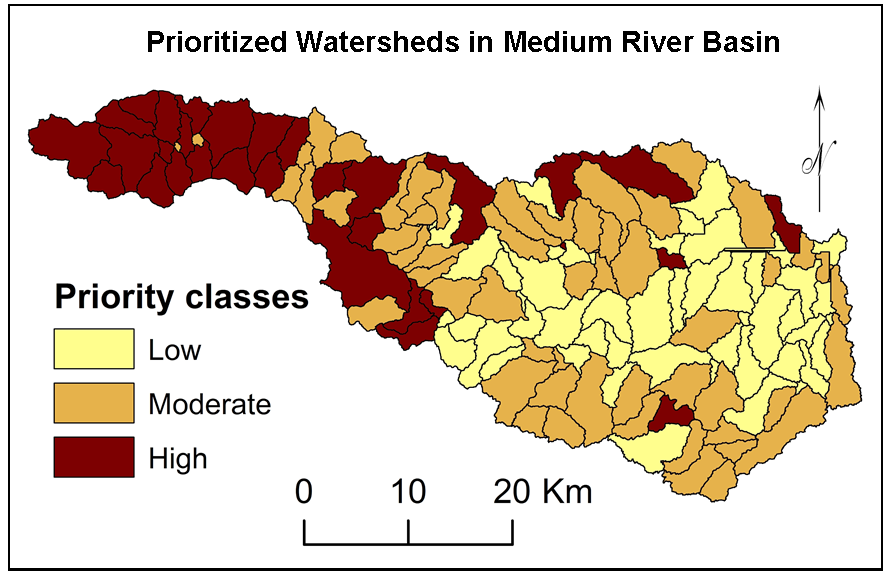Article Title :
Groundwater Yield Modeling in the Floodplain of Hadejia, Northwestern Nigeria 
Abubakar Ibrahim Tukur
 ,
Maharazu A Yusuf
,
Adnan Abdulhamid
,
Da'u Abba Umar
,
Hamza Ahmad Isiyaka
,
Mohammad Firuz Ramli
,
Maharazu A Yusuf
,
Adnan Abdulhamid
,
Da'u Abba Umar
,
Hamza Ahmad Isiyaka
,
Mohammad Firuz Ramli
4 (2020)
29-39
Modeling , Groundwater Yield , Floodplain , Diurnal Variation


This paper proposed a model explaining variation of shallow groundwater yield and dynamic level with respect to river location in the floodplain of Hadejia, along Hadejia River Basin of Jigawa State, Northwestern Nigeria. To achieve the aim, six transects were established within one km2 of floodplain and were oriented perpendicular to the river channel. Three tube wells were sampled and positioned along each transect at regular intervals making a total of 18 wells. Pumping test, which was repeated four times at 15 minutes interval in both morning and evening hours was used to measure groundwater yield. Multivariate statistical tools such as analysis of variance, Pearson product moment correlation, and cluster analysis were used, respectively, to test the research hypothesis and to classify sampling points into similar groups based on groundwater yield. Results show that the average yield of wells for evening hours recorded a higher yield of 3.3 L/s (55.93%) than the yield in the morning hours of 2.6 L/s (44.07%). Further, the 2-way ANOVA at 5% level of significance showed no significant difference in the groundwater yield related to relative location of wells in morning (p value, 0.30>0.05) and evening (p value, 0.21>0.05) hours. The results of ANOVA revealed no statistically significant difference between the points. It suggests that the adopted model can be applied in other similar sedimentary basins with a view to validating it. A decision support system is recommended among the strategies to improve groundwater resources management in the area.

Three tube wells were sampled and positioned along each transect at regular intervals making a total of 18 wells.
The ultimate aim of the study is to establish relationship between groundwater yield and river flow.
2-way ANOVA at 5% level of significance showed no significant difference in the groundwater yield.
Average yield of wells for evening hours recorded a higher yield of 3.3 L/s (55.93%).
The study can be replicated in other sedimentary formation areas to validate.
Driezum, I. H. V., Chik, A. H. S., Jakwerth, S., Lindner, G., Farnleitner, A. H., Sommer, R., Blaschke, A. P., Kirschner, A. K. T., 2018. Spatiotemporal analysis of bacterial biomass and activity to understand surface and groundwater interactions in a highly dynamic riverbank filtration system, Science of the Total Environment, 627 450-461.
Iliya, M. A., Muhammad-Baba T. M ., and Oppon-Kumi, A., 2011. Climate change, land degradation, forced migration and farmers- pastoralists conflicts in the Sokoto-rima basin in north-western Nigeria: observation and extrapolations. First National Conference on Climate Change, 24th May, 2011, Bayero University Kano, Nigeria
Mays, L. W., 2009. Integrated urban water management: Arid and semi-arid regions, Tylor and Fransis Group plc: Leiden, The Netherlands, UNESCO Publishing, Paris, France, 1-73.
Olofin, E. A., 2011. Geographical hydrology lecture note series, Department of geography, Bayero University, Kano, 3-4.
Olofin, E. A., 2014. Location, relief and landform. In (Ed.) Tanko and Momale, Kano: Environment, society and development, Adonis and Abbey, London and Abuja, 1-11
Olofin, E. A., 2016. Water resources planning and management: lecture notes on WMA501: Water resources planning and management, Department of Water resources management and agro-meteorology, Federal University of Oye-Ekiti, Ikole Campus, Nigeria, 4-12.
Streett, B., 2001. Guide to conducting well pumping tests, Water Stewardship Information Series, British Columbia, 1-8.
Umar, D. A., Ramli, M. F., Aris, A. Z. and Zaudi, M. A., 2019a. Hydrological response of semi-arid river catchment to rainfall and temperature fluctuations. Pertanika Journal of Science and Technology, 27(4), 2333- 2349.
Xu, Y. and Usher, B., 2006. Groundwater pollution in Africa. Taylor and Fransis Group, 23-25.
Xu, Y. and Usher, B., 2006. Groundwater pollution in Africa. Taylor and Fransis Group, 23-25.






